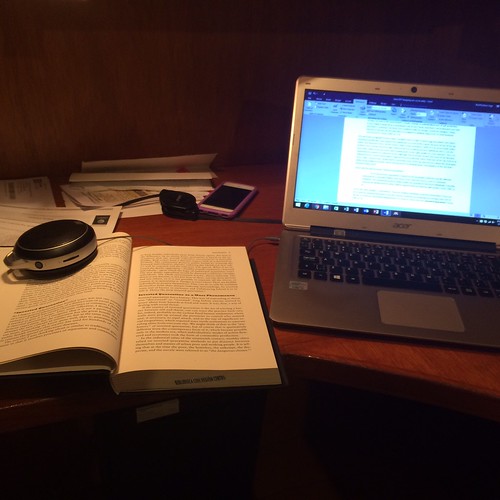Writing book reviews, to me, feels as the service we all ought to provide other scholars. I don’t post actual reviews on my website (instead, I post my reading notes because I don’t know if my notes are detailed enough to be an actual review, and whether I’ll do justice to the author), but I do have extensive experience writing reviews. Producing a book (or even editing a volume) is a tremendously challenging and taxing endeavour, so I believe book reviews should be done thoroughly, kindly and honestly.
For many of my colleagues, assigning a book review (or a book review essay) is part of their teaching process. I don’t do this in my classes, and never have, even in graduate school courses. But I have written and published book reviews myself in various journals (my most recent one of Plastic Water, by Hawkins, Potter and Race in the Canadian Journal of Water Resources). While different people (and evaluation committees) will value book reviews differently, for many folks publishing a book review will be a nice entry into the world of academic publishing.
Via @HNet_Reviews, great review of @NancyAppelbaum’s Mapping the Country of Regions. It provides everything a good review should: very effective summary of the book’s argument, useful contextualization of its contributions. https://t.co/04FJrlsuPX
— Robert A. Karl (@RAKarl) December 21, 2017
For me, a good review should include at the very least the following elements:
- Full citation and price of the book.
- A summary of the book’s major insight(s), usually worded in the nicest way possible.
- A detailed account, chapter by chapter, of the best elements learned in the book.
- A summary of everything good and bad about the book, again, usually worded in a nice but rigorous way.
There are a few book reviews that are a bit more picturesque (like this one, which starts with a lovely memory that brings the author of the review home with regards to what they want to say about the book) or more systematic and direct, like this one that summarizes the book concisely and swiftly.
For me, the actual physical process of writing a book review goes like this (bear in mind I’ve already written about how to read entire volumes, both single-or-multi-authored and edited):
- I start by skimming the entire book really quickly.
- I read the introduction and conclusion.
- I make a plan to read the entire book, if I can’t in one sitting, which chapters I’ll be reading over however long I decide to take to finish the review, unless I’m under deadline.
- I follow the plan, usually reading and taking handwritten notes about the book chapter(s) in my Everything Notebook (or typing detailed notes in a memorandum).
- I write up the review as noted above, but reserve criticisms to the very last paragraph of the review.
- I send it out to people whom I trust and ask them to see if my review was too harsh.
- I edit the review according to feedback I receive.
My hope is that this post will help those who are writing book reviews. As always, be honest and direct, but also kind and generous. You can always write a detailed review that is tough, but that can be palatable and find the good elements of a book. Someone on my Twitter timeline recommended these 3 rules about book reviewing post, also worth considering.
Another solid example of a book review as published in Canadian Food Studies can be found here (thanks Dr. Sarah Martin for this piece!)
Dr. Michael Leo Owens also offered one of his own book reviews for you to check out (thanks!)


It is very kind of you.Thank you so much for your insightful suggestions.
Warn Regards